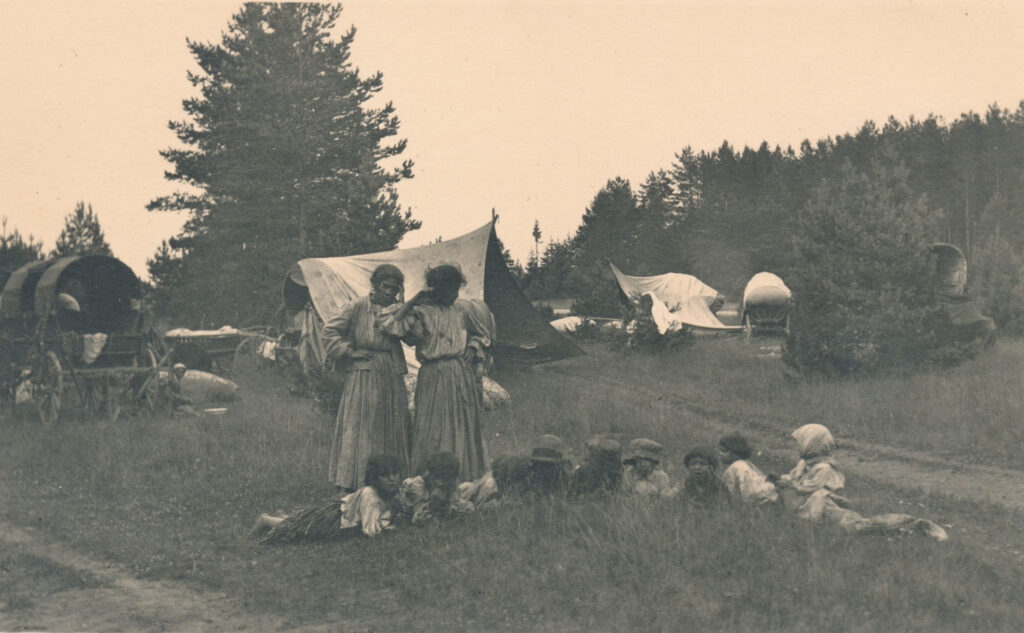Permanent settlement of the Roma in Estonia developed in the 19th century. Russian czar’s order of 1839 had a major role in this, as it required that the Roma settle in locations allocated to them and permanently remain there. Nomadic Roma living in Estonian territory had mainly come here from Scandinavia, and were gathered to Laiuse parish in Eastern Estonia in early 1840s. From then on, new groups of Roma arrived to Estonia from Russia and Latvia, who, unlike the Laiuse Roma community, were less tightly bound to Estonia and maintained their nomadic lifestyle.

(Foundation of Virumaa Museums)
Prior to the Second World War, approximately 750 settled or semi-settled Roma lived in Estonia. Most of them were repressed during the German occupation. Unlike Latvia and Lithuania, the local representatives of the German occupying regime lacked a specific anti-Roma policy, which enabled the survival of most Estonian Roma until mid 1943. Initially, the social status of Roma played a certain role in their treatment. Namely, the German occupying regime’s approach to Roma depended on whether they were nomadic or settled, and the latter were not necessarily immediately repressed. Whether a person was considered a nomadic or a settled Roma might have depended on the officials’ whim.
Some Roma were arrested and shot in Estonia right after the German forces’ invasion in the summer of 1941. There is data regarding the executions of Roma from Tartu, Pärnu and Narva. Nomadic Roma were captured on a larger scale at the end of 1941 and early 1942. 250 detainees were shot in Harku camp in October 1942, but it is possible that more Roma were executed elsewhere that autumn as well.

(Tallinn City Museum).
Settled Roma were first placed under police surveillance and sent to forced labour camps. Special conditions for settled Roma were terminated by early 1943. The police had to gather all Roma to the administrative centres of counties in order to transfer them to Tallinn. By the end of February, more than 500 Estonian Roma were detained in Tallinn Central Prison. Some of them were executed at the Kalevi-Liiva polygon near Tallinn. However, the fate of the majority of the detainees is unknown.
The total number of Estonian Roma that perished during the German occupation is unknown. Most likely, more than half of local Roma lost their lives. According to some estimates, merely 5–6% of the pre-war Estonian Roma community survived the war.